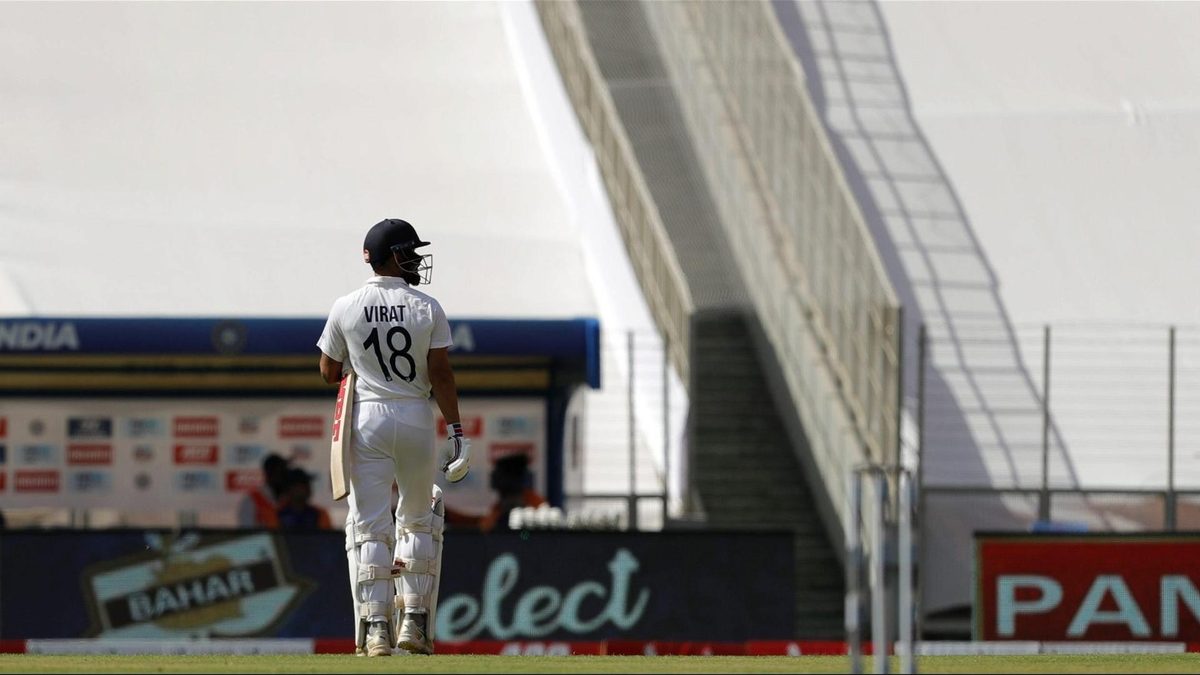
Falling numbers, falling reputation – the form of India’s batting big three raises concerns despite the team’s increasing reputation as an outstanding Test side, writes Rohit Sankar.
In the euphoria of another series triumph Down Under, the uber-cool introductions of Mohammed Siraj, Washington Sundar and Axar Patel into Test cricket, the refreshing, devil-may-care approach of Rishabh Pant, the cacophony around the pitch debate and most importantly, the sheer brilliance of Rohit Sharma, what’s gone less discussed is the form of the core of India’s Test middle-order: Cheteshwar Pujara, Virat Kohli and Ajinkya Rahane.
Since 2020, in Test cricket, spanning three series, the trio average 28, 24 and 27.7 respectively. It’s not that their numbers haven’t ever been brought up. It was, as recently as before the start of the ongoing India-England Test match to the most vulnerable of the three names, Rahane. The response, more like a quick snap, was eerily comparable to the most assured of those names.
“I was expecting this question. Thankfully, you asked,” said Rahane in the press conference before the fourth Test. “I think you need to check your facts, you know my contribution. Whenever the team needed runs, my runs are there so you need to focus on your stats and come up with the question. You know I am a team man, everyone knows that and whenever the team needs me to perform in a particular situation, I have always done that.”
Rahane has a hundred in this period – a brilliant one at that at the MCG to turn around India’s Australia tour – one that neither Kohli nor Pujara boast of. But even then, seven of his 18 innings since the start of 2020 have been in single digits. A further five have ended between 10 and 30, suggesting that even when he has had starts, Rahane hasn’t capitalised.
Pujara, on the other hand, is a queer case. There’s no doubting that his stability and crease-occupation is important to India in Test cricket. Since the beginning of last year, he has faced the third-most number of balls in Test cricket of anyone. But his batting average in this period is a mere 28, with three of his five fifty-plus knocks ending before reaching 60.
Temperament-wise India have no better middle-order batsman, but Pujara’s impact is tied to how the men around him bat, understandably so given how his role is to drop anchor. This is further emphasized by the fact that his three best partners in this period, in terms of partnership runs, are Pant, Rohit Sharma and Shubman Gill, the three batsmen with the best strike-rates for India (min 4 Tests) in this period. With Rahane and Kohli, the ones who come below Pujara, in suspect form, his role hasn’t quite had the same kind of impact India would have liked for it to have.
Cheteshwar Pujara vs Jack Leach this series:
c Stokes b Leach 15
c Stokes b Leach 21
LBW Leach 0
LBW Leach 17Before this series, Pujara was dismissed by an SLA bowler in 2017 (Steven O’Keefe)#INDvENG
— Stat Doctor🩺 (@stat_doctor) March 5, 2021
What’s also notable is his four dismissals to Jack Leach this series: beaten on the inside edge twice to be trapped in front and outside edging twice to the slip fielder. A prolific player of spin, Pujara has been dismissed five times by spin this series. Since 2019, only three of his 24 dismissals had been to spin before this series.
Kohli’s case is even more bizarre. Two of his best sub-100 knocks came in this series: a quietly elegant 72 in Chennai on the fifth day with uneven bounce profoundly in play and a classy 62 in the third innings on a rank turner. But unlike Pujara, whose value is more in his resilience, and Rahane, whose sparks of brilliance stand out through his career, Kohli’s forte is runs, and plenty of them. Until now, his hundreds have come at a rapid frequency. His last international hundred came in November 2019, more than 15 months ago. Even with his absence on paternity leave and the general lack of cricket, it’s a concerning dip in form.
Rohit’s massive impact at the top, Pant’s savage runs from the middle-order and some gritty runs from the Sundars, Ashwins and Thakurs have masked the ordinary form of India’s big three. Unlike on the flat pitches in Australia or the rank turners at home, it’s not something that can be kept under wraps when the World Test Championship final, if they get there, and the subsequent England series happens in England. For all the noise around India’s brilliance in Test cricket and the depth of the talent pool, a pertinent issue stares them in the face, one that needs a quick fix.
Subscribe to the Wisden Cricket YouTube channel for post-match awards, player interviews, analysis and much more.








